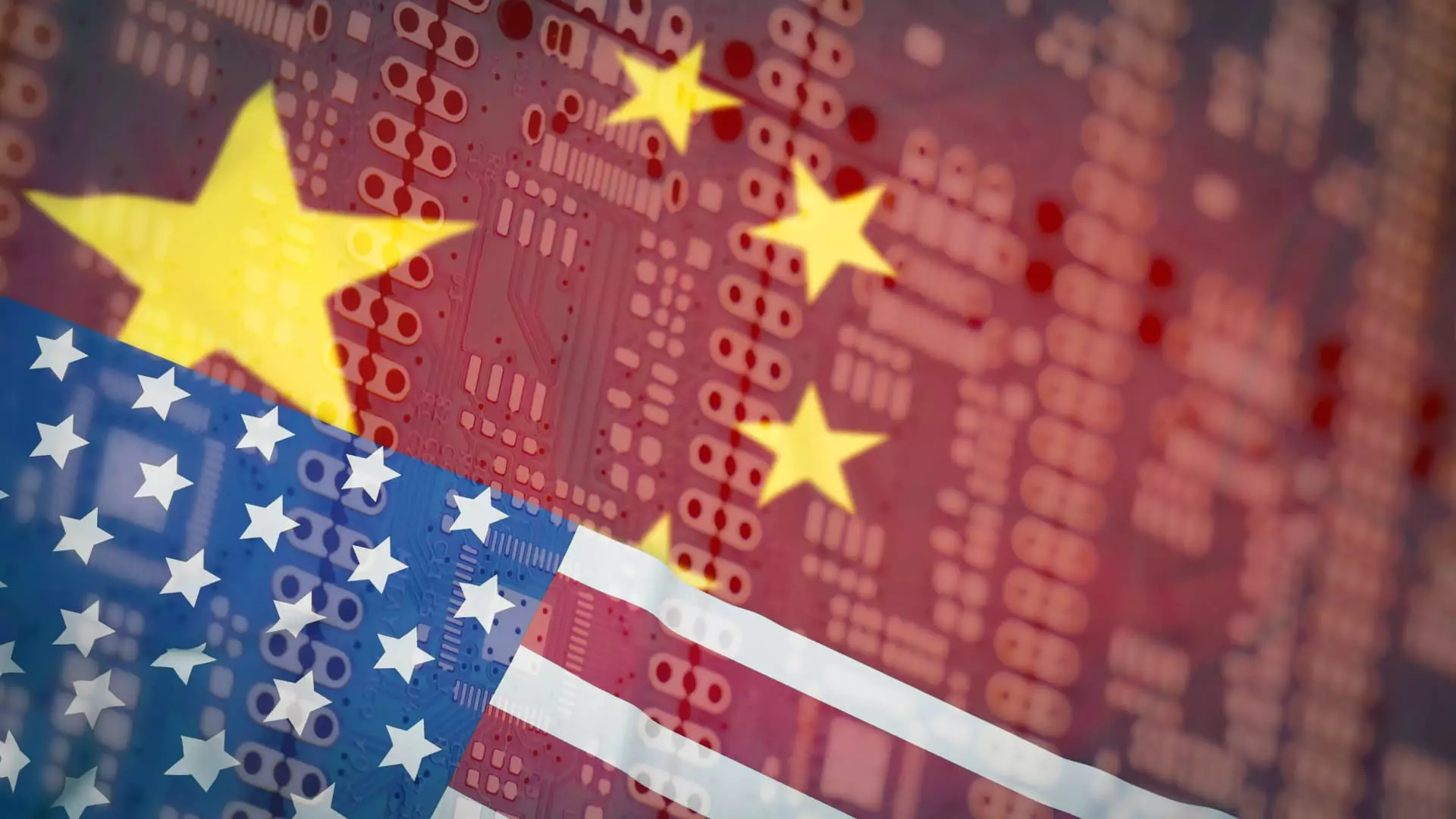In a landscape marked by intense competition and regulatory headwinds, Chinese technology behemoths Tencent and Baidu have crafted a resilient approach to navigating the challenges imposed by U.S. semiconductor export restrictions. These companies have not only recognized the necessity for effective resource management but have also embraced innovation and local capabilities to sustain their growth in artificial intelligence. The increasing restrictions from the United States arguably create a backdrop where adaptation, rather than mere compliance, becomes paramount.
The Chip Stockpiling Strategy
Tencent’s proactive stockpiling of graphics processing units (GPUs) serves as a testament to its foresight in the face of supply chain uncertainties. Martin Lau, President of Tencent, pragmatically acknowledged the company’s “pretty strong stockpile” of chips acquired before the tightening of U.S. export controls. This notion that sustained readiness through advanced resource allocation can mitigate risks reveals a strategic depth seldom portrayed in conventional business narratives. Lau’s assertion that smaller clusters of GPUs can yield efficient training results challenges the prevailing American paradigm of scaling hardware to bolster AI model competence.
This insight reflects a broader opportunity: efficiency over volume. By exploring software optimization instead of relying solely on brute-force hardware acquisitions, Tencent exemplifies a shift toward a more nuanced understanding of technology application. This fundamental understanding and adaptation signify a vital shift—not merely in resources but in operational philosophy.
Efficient Solutions through Software Innovation
Lau emphasized the importance of “software optimization,” advocating for an approach that seeks to enhance AI task execution without the relentless pursuit of larger GPU arrays. This methodology not only underscores the value of ingenuity but demonstrates a commitment to exploration and experimentation within the domain of AI. Tencent’s focus on smaller AI models is a strategic pivot that reduces dependency on expansive compute resources while maintaining competitive outputs.
The emphasis on software development emphasizes that the future of AI does not lay solely in hardware advancements but equally relies on the capabilities of software to refine and elevate model performance. This cultural shift within the company highlights a layer of sophistication and adaptability that can sidestep potential bottlenecks.
Baidu’s Full-Stack AI Ecosystem
In parallel, Baidu’s distinctive focus on a “full-stack” AI strategy—integrating cloud infrastructure with proprietary AI models—illustrates another angle from which companies are responding to the semiconductor issue. Dou Shen, president of Baidu’s AI cloud initiative, posited that even in the absence of cutting-edge chips, the company’s self-contained technology ecosystem could deliver tangible value. This illustrates a resiliency borne of innovation; by controlling the full spectrum of its technology stack, Baidu minimizes vulnerabilities related to external supply chains.
As foundation models amplify the demand for computational prowess, Baidu’s focus on optimizing GPU utilization becomes a clear competitive advantage. Efficiencies in managing GPU fleets not only bolster performance but fundamentally redefine the use-case scenarios for AI applications within the company’s operational framework.
Building a Self-Sufficient Semiconductor Landscape
Moreover, while the restrictions from the U.S. represent a challenge, the environment has spurred domestic innovation in China’s semiconductor sector. Baidu’s advocacy for self-sufficient chips reflects a broader national ambition that has been gaining momentum over recent years. The capability to manufacture indigenous semiconductors is not merely a protective measure against foreign sanctions but forms the backbone of an innovative ecosystem that fosters long-term development in AI technologies.
Gaurav Gupta, a semiconductor analyst at Gartner, emphasized the importance of building a domestic semiconductor ecosystem. While China may trail the United States in high-performing GPUs, the strides made in creating foundational layers—from materials to manufacturing— showcase a remarkable commitment. This ecosystem serves as a beacon of potential, indicating that despite current technological disparities, a robust infrastructure is gradually taking shape.
The Bigger Picture: Long-Term Implications for Global AI
As tensions between the U.S. and China intensify, voices from the American tech community express concern regarding export restrictions. Nvidia CEO Jensen Huang’s critique suggests a recognition that policies inhibiting technology exchange could inadvertently hinder innovation on both sides of the Pacific. This complexity presents a dual narrative: as Chinese companies rally around alternative resources and strategies, U.S. corporations face the risk of isolation from a fast-evolving market.
What remains significant is the narrative that emerges from Tencent and Baidu’s experiences—advancing one’s capabilities amid external challenges can foster unprecedented growth. As these companies lay the groundwork for a self-sufficient and expansive AI ecosystem, the implications stretch far beyond national boundaries, heralding a new era of innovation that prioritizes resourcefulness and adaptability over mere technological supremacy.


Leave a Reply